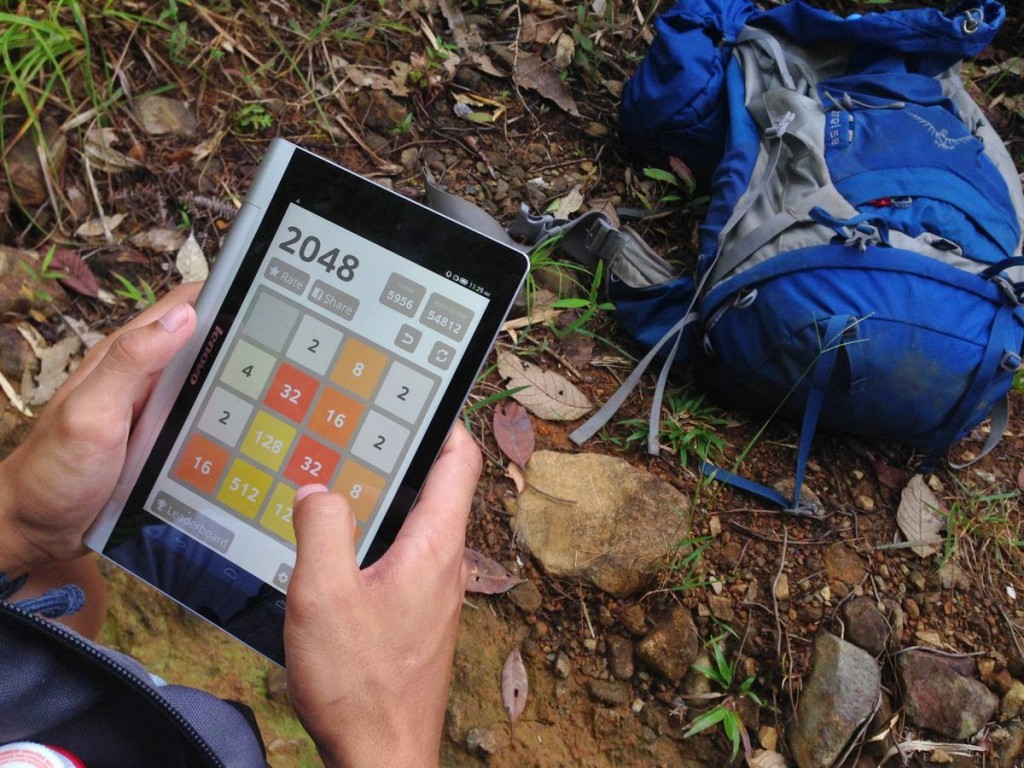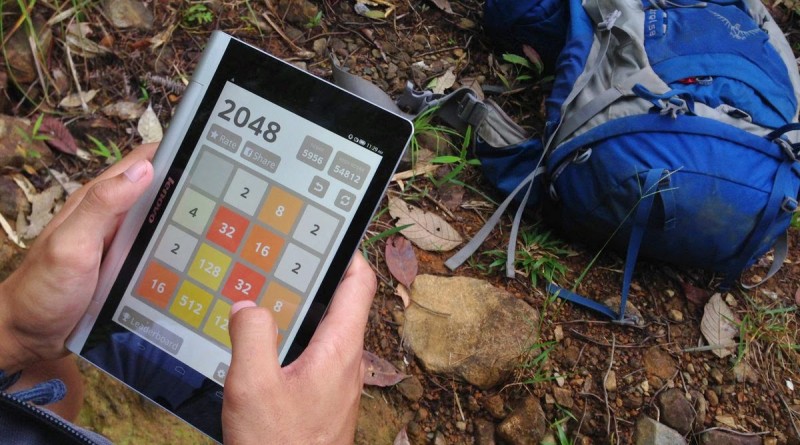Essay: Going outdoors and staying online
 |
| A hiker uses a Lenovo Yoga tablet on a hike up Mt. Salakot |
It is not just the ability to communicate that makes. It has navigational uses too – as a digital compass, and increasingly, as a GPS device. Though (expectedly) not as accurate as dedicated GPS devices, it can still give your general location to other people if necessary, or, more usefully, it can help you find your way back. Not many people use this function but in the future, I see that this will be more widespread. Indeed, I see that more and more apps will allow you to track yourselves on a certain route, with the option having the app send this information to rescuers if necessary.
Second, our gadgets have allowed us to bring our loved ones closer to the hiking experience. I have experienced Facetime-ing from on a campsite – showing my loved ones the moss and the clouds, the tent and the camp food. In the Paray-Paray campsite of Mt. Mantalingajan, I spent a good portion of the evening chatting with some of my friends who have done the traverse ahead of me, and I was asking them questions about it. Parents can rest easier when they see their children online, available for chat, albeit on the mountain.
Third, gadgets have allowed a broad range of technologies previously unavailable – or prohibitively expensive – for the outdoors. Before, one had to use an expensive and bulky camera to take good photos. Today, your phone can do the trick – although of course the dSLRs still have a great advantage. But even they have improved greatly, owing to improvements in digital photography. Daryl Comagon taught me how to use an app to take time-lapse videos, and when I uploaded some of them, there were incredulous folks when I said I just took it using an iPhone!
The GPS units and altimeter watches of the past were so expensive that became (and still are) prestige items among hikers. But like I said, many of our gadgets now can come with GPS and navigational apps. I used to bring books during my climbs, though that too, has given way to just having e-books in my phone or tablet.
Camped in Hungduan, after a successful Napulauan traverse dayhike, Koi Grey told me that I should listen to the music of Florante, a Filipino folk singer. My interest piqued, I went to iTunes and downloaded an album of the singer’s greatest hits, and we had an enjoyable roundtrip. I could just as easily have downloaded any song – and in the future – perhaps watch any movie. With the world within our reach wherever we are, however, what is left to be desired?
The reliance on technology also applies to the ways in which people can enjoy themselves. For example, the music of the forest can be drowned by the ballads, the reggae and the EDM that we bring with us. Having computer games can make us forget the physical games that can be just as fun – and much more engaging. In Mt. Elbrus’ Barrels campsite, we spent a whole day playing pusoy dos, and ultimately, the game would count among our happy memories of the expedition. (As an aside, I also suspect that the less technology-dependent we are, the less impact we make on the environment.)
Finally, connectivity to the outside world can lead to less interactions with those who are actually physically with you. In the past, people really get bonded with each other when they go hiking because they leave the outside world, and form a new social world together, if only for a while. However, today, it is possible for a hiker to hole up inside his or her one-man tent and go on an night-long Facebook chat, play computer games – or even do a movie marathon. When we reach the summit – instead of celebrating and relishing the moment with others, do we instead rush for that perfect solo picture – or selfie – and painstakingly try to upload it? We must always remember that the the view is more important that the picture.
Personally, I embrace technology, and have maximised the ways in which my gadgets can be utilised when I’m outdoors. But I always remind myself that the mountain is my sanctuary, the place where I can let go, and that oftentimes, I need to log out of the outside world to see the beauty that happens in the here and now.
Gideon Lasco
August 25, 2014
Puerto Princesa, Palawan



Leave a Reply
Be the First to Comment!